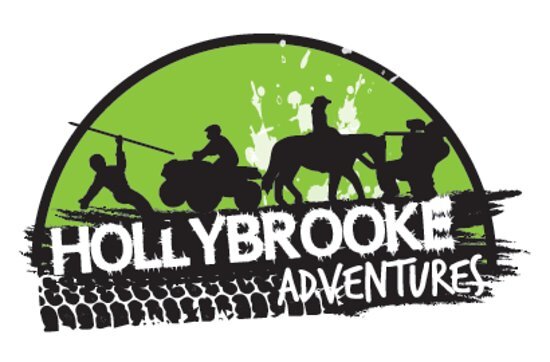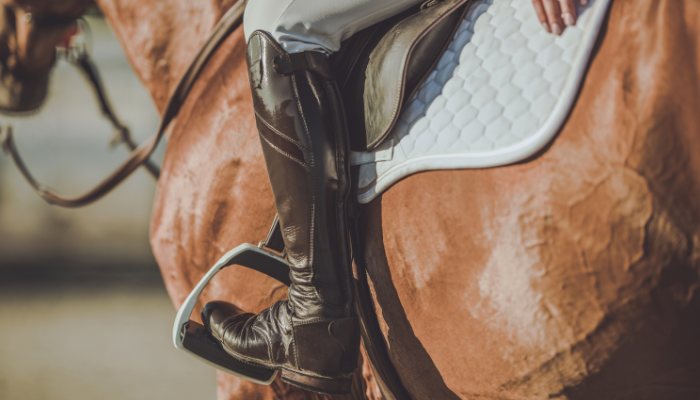7 Tips For First-Time Horse Riding
Are you going to be riding a horse for the first time? Have you never been up ‘close-and-personal’ with a horse before? Well, there are a few things to keep in mind when meeting one of these beautiful beasts without first-hand experience. Whether you are riding a horse on a horse trail at Hollybrooke Adventure Farm, or you’re on a horse trail elsewhere, or you’re attending your first horse riding lesson, here are some tips for you first-time horse riders.
One: Relax, Max
Seriously; there are so many people that attend their first horse ride who are at their wits-end from heightened nerves. A horse is an animal that feeds on the riders’ emotions, and you’ll likely see many images or videos of young children who seem to have no trouble mastering our equine friends. This is because children who have grown up with horses are comfortable and confident, happy in the understanding that the animal will not purposefully hurt them (this is similar to the confidence that some children have with dogs when brought up alongside these animals). So if you’re attending your first ride, try and relax. If you are nervous, then fake it until you make it. Don’t flinch or scream as a response to the horse making any movement.
Two: Wear The Correct Clothing
Horse riding, as you’ll find out, can be a taxing experience. You’re not driving a car in a comfy seat here. Sitting in a saddle can cause muscle pain in areas you never knew you had muscles. That’s why you’ll find that many experienced riders will use jodhpurs (close fitting riding pants) and riding boots. Should you not have any riding pants and boots, then make sure you are wearing comfortable trousers (like jeans) and a closed pair of hard-wearing shoes. Little else is required, apart from the most important piece of gear: a riding helmet. Almost all riding schools or trails will provide you with a riding helmet should you be lacking one. These are the famous hard hats shaped to look like the old English hunting caps.
Three: Making Friends
Somewhat similar to our first tip, your confidence results in the horse’s confidence in you. Your horse ride won’t be momentous if your horse doesn’t like you; it’s letting you sit on it’s back at the end of the day. So, before riding for the first time, why don’t you greet the horse? Horse’s love to be tickled on their muzzle if it is timid. Let the horse smell you (as they have a terrific sense of smell), and maybe even feed the horse a carrot (their absolute favourite food). This way, the horse will know who is riding it, and therefore is more likely to respond to your cues.
Four: Mounting Up
Both yourself and the horse are at your most vulnerable when mounting, so make sure that you do not put the horse in any undue pressure. This is also quite difficult to master if it is your first time on the horse. For this reason a groom will likely assist when it comes time to mounting the horse. Firstly, the horse will most likely be used to people mounting from its left flank. Place your left foot in the stirrup (the supports for your feet) and hold the reins in your left hand. Your left hand, with reins held, can be placed on the saddle horn, and your right hand should be placed in the centre of the saddle. Using the propulsion of your right leg (and putting the least amount of pressure on the back of the horse) jump up and swing your right leg around the rump of the horse. If done correctly your bottom will be in the saddle and your right foot can be placed into the right stirrup.
Five: Feet and legs
Strangely enough, while you might assume that your hands are doing the work on a horse (due to your hands holding the reins), your legs and feet are also very important in giving your horse the correct cues. When in the stirrups, you must remember that the front balls of your feet will be pushing down on the supports, leaving your heels open to ‘bump’ the horse lightly (a signal to walk forwards). Additionally, get used to balancing and ‘holding’ onto the horse using the inside of your legs. You’ll be surprised to know that one’s hands should not be used to keep oneself on the saddle, rather this is the job of the leg muscles and the insides of your thighs.
Six: Gently Does It
If you’re riding for the first time, you’ll likely have a groom assisting you on your adventure, or an instructor on your first lesson. It’s worth knowing before your first ride that you need to be gentle on a horse: it’s not a form of machinery that needs to be wrestled in order to work. Pulling on the reins should be done without being a forceful yank. Additionally, should your horse be used to audible cues, you don’t need to shout in order to be heard by the horse. Shouting and using force on a horse should only be done by a trained and experienced groomsman or owner who the horse is used to.
Seven: Be Aware
When riding a horse, you are often a few hands higher than the top if the horse’s head. This means that a low hanging branch for the horse has the potential to knock you out of the saddle. As when driving a car, make sure that you look out for any hazards or dangers that can put you or the horse in danger. Remember: our eyesight is better than a horse’s (when it comes to details), so low branches, holes or poles on the ground, sharp objects on the trail, or even other little animals (that might give your horse a fright) should be avoided by the rider.
Again, if it is your first time on a horse and you are a first-time horse rider, then you are likely to be in the presence of a trained groomsman or instructor, so don’t worry or stress unduly… We again refer to Tip Number One. We hope that you have a great first time on the back of the horse, and maybe you develop a new hobby and interest in these beautiful animals. If you’re looking for a great horse riding experience, why not visit Hollybrooke Adventure Farm’s horse trails page and book an outride for you and some friends/family? See you soon!






